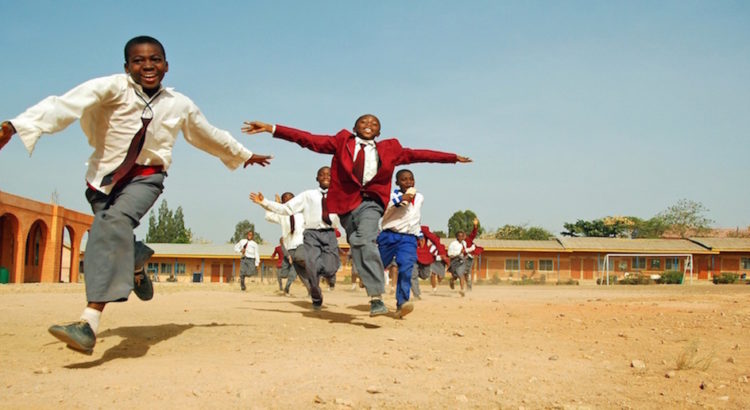By: Sarwar Md. Saifullah Khaled
Education is at the core of progress in all fields in the world. Its role in eradicating poverty through equitable distribution of income and achieving progress and prosperity can hardly be over-emphasised. There is no alternative to education to achieve Sustainable Development Goal (SDG) to alleviating poverty by 2030. A new United Nations Educational, Scientific and Cultural Organisation (UNESCO) policy paper shows that the global poverty rate could be more than halved if all adults completed secondary school.
But new data from the UNESCO Institute for Statistics (UIS) show persistently high out-of-school rates in many countries. This makes it likely that completion levels in education will remain well below the target for generations to come. The paper titled ‘Reducing global poverty through universal primary and secondary education’ is being released ahead of the UN High Level Political Forum (10-19 July), which will focus on poverty eradication in pursuit of the 2030 Agenda for Sustainable Development (ASD).
The paper demonstrates the importance of recognising universal primary and secondary education as a core lever for ending poverty in all its forms everywhere in the world. UNESCO Director-General Irina Bokova was quoted as saying in a message received from Paris that the new analysis on education’s far-reaching benefits should be good news for all those working on the Sustainable Development Goal (SDG) to eradicate poverty by 2030. She said, «It shows we have a concrete plan to ensure people no longer have to live on barely a few dollars a day».
The new analysis on education’s impact on poverty and income inequality by the UNESCO’s Global Education Monitoring (GEM) Report team is based on average effects of education on growth and poverty reduction in developing countries from 1965 to 2010. It shows nearly 60 million people of the world could escape poverty if all adults had just two more years of schooling. If all adults completed secondary education, 420 million could be lifted out of poverty in the world, reducing the total number of poor people by more than half globally and by almost two-thirds in sub-Saharan Africa and South Asia. Studies have shown that education has direct and indirect impacts on both economic growth and poverty.
Education provides skills that boost employment opportunities and incomes of people while it helps protect people from socio-economic vulnerabilities. A more equitable expansion of education globally is likely to reduce inequality of income, lifting the poorest from the bottom of the income ladder. Despite education’s immense potential, the new UIS data show that there has been virtually no progress globally in reducing out-of-school rates in recent years. Nine per cent of all children of primary school age globally are still denied of their right to education with rates reaching 16 per cent and 37 per cent for youth of lower and upper secondary ages, respectively. In total, 264 million children, adolescents and youth were out of school in 2015.
Sub-Saharan Africa remains the region with the highest out-of-school rates for all age groups. More than half (57 per cent) of all youth between the ages of 15 and 17 are not in school, as are more than one-third (36 percent) of adolescents between 12 and 14 years and one-fifth (21 percent) of children between the ages of about 6 and 11. Six countries, namely Ethiopia, India, Indonesia, Nigeria, Pakistan and Sudan are home to more than one-third of all out-of-school children of primary age. Of the 61 million children of primary school age currently out of school, 17 million will never to set foot in a classroom if current trends continue. This affects one in three children out of school in sub-Saharan Africa, Western Asia and Northern Africa, and more than one in four of those in Central Asia and Southern Asia.
Girls in poor countries continue to face barriers to education. According to UIS data, in low-income countries, compared to almost 9 million of boys, more than 11 million girls of primary age are out of school. But the good news is that the girls who do manage to start school at primary level tend to complete the primary cycle and pursue their studies at the secondary level.
Education must reach the poorest to maximise its benefits and reduce global income inequality. Yet the GEM Report shows that children from the poorest 20 per cent of families are eight times as likely to be out of school as children from the richest 20 per cent in lower middle-income countries like Bangladesh. Those of primary and secondary school age in the poorest countries are nine times as likely to be out of school as those in the richest countries.
While urging countries to improve the quality of education, the paper stressed the need to reduce direct and indirect costs of education for families. New UIS data confirm that many households still have to bear expenses relating to education, totalling US $87 per child for primary education in Ghana, US $151 per child in Côte d’Ivoire and US $680 in El Salvador. This is higher in comparison to the level of cost that they can afford comfortably.
Source:
http://www.thefinancialexpress-bd.com/2017/07/02/75725/Combating-global-poverty-with-education






 Users Today : 3
Users Today : 3 Total Users : 35404025
Total Users : 35404025 Views Today : 3
Views Today : 3 Total views : 3333482
Total views : 3333482